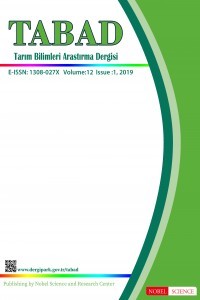Katılımcı Sulama Yönetimi
Gelişmekte olan çoğu ülkelerde, sulama geliştirme projeleri ve onların işletim-yönetimi devlet tarafından yürütülmektedir. Geleneksel anlayışa göre; su dağıtımı ve ücretlerin toplanması için büyük miktarda yatırımlar, karmaşık teknik gereksinimler ve yasal düzenlemelere ihtiyaç gösteren büyük modern projeleri ancak devletin sahip olabileceği yönündeydi. En son deneyimler birçok ülkede bu anlayışı değiştirmiştir. Devletçe işletilen sulama şebekeleri, sürekli tahrip edilen altyapısıyla çoğunlukla kötü yönetilmektedirler. Ancak aynı projeler, işletim ve bakımı için devletle bazı özel anlaşmalar yapılan çiftçi gruplarına devredildikten sonra yönetilmelerinde çok önemli değişimler göstermişlerdir. Son yirmi yıldır çoğu ülke çiftçilerin sulama şebekelerinin işletme-bakımını üstlenmeleri konusunda cesaretlendirici politikalar uygulamışlardır. Fakat bu eğilim son zamanlarda daha da büyük bir ivme kazanmıştır. Bunlar içerisinde en göze çarpan iki tanesi ise; 1.2 milyon ha sulu tarım arazisinin sulama birliklerine devredildiği Meksika ve çoğunluğu devletçe kontrol edilen sistemlerin kullanıcılara devredildiği Türkiye’dir.
Participatory Irrigation Management
In most developing countries, irrigation development project and their operation and management are heavily dominated by the public sector. Conventional wisdom once assumed that only the state was capable of handling large modern projects requiring heavy capital investment, complicated technical inputs, and the legal mandate to distribute water, and collect fees. Recent experience in many countries has over tuned these assumptions. Government-operated irrigation systems are often poorly maintained with steadily deteriorating infrastructure. Yet some of these same systems have shown dramatic improvement when their management was transferred farmer groups who entered into contracts with the government for operating and maintaining portions of the irrigation system. For the past two decades most countries have adopted policies to encourage greater involvement of farmers on irrigation O&M but only recently has this trend gained momentum to transfer the balance of responsibility from government to farmers. Two of most dramatic management transfer programs have been in Mexico, where the government has transferred more than 1.2 million ha of irrigated lands to WUAs, and in Turkey, where a majority of agency controlled system have been transferred to user management
